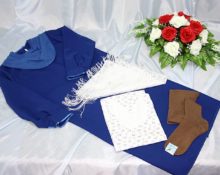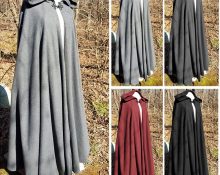
creativecommons.org
Making a baby patchwork blanket with your own hands is quite simple. It will take perseverance, creativity and time to create an exclusive item for your baby. Patchwork is becoming more popular every year. Once undeserved technology is again in demand in various fields. Patchwork is used for sewing accessories, clothing, bed linen, and interior items. A baby blanket from scraps can be made with knitting needles or sewn from fabric. The child will surely like both options. A children's set made from pieces of different fabrics, for example, a pillowcase and a warm blanket, looks original. Children's blankets in patchwork style will be an excellent gift for the New Year or birthday. And the baby will remember such a souvenir from a relative for the rest of his life.
How to choose fabric for a baby blanket
Before sewing a baby blanket in a patchwork style, you need to select the optimal material and think through the design.It must be as reliable and durable as possible so that the product can serve the child for many years and does not fall apart or burst. It is necessary not only to firmly sew all the elements together with high-quality threads, but also to re-quilt the blanket. Otherwise, several washes may damage the product.
A patchwork baby blanket includes three main components - a base, insulation and an outer side. There are certain requirements for materials:
- No possible allergic reactions in the baby. It is advisable to choose hypoallergenic fabrics.
- Natural composition. The best option for a child would be a product made of calico, silk or linen.
- High level air permeability. For a relaxing rest, it is important that the air does not stagnate, circulates and allows the skin to breathe.
- Wear resistance and fabric strength. Patchwork baby blankets are often washable, so they should be adaptable to the washing machine - not stretch or deform.
- No toxic dye. Modern materials are rich in various additives that are harmful to health. The first indicator is the presence of an unpleasant odor or the rapid loss of color of the designs after washing.
- Presence of antistatic properties. Furniture materials are perfect for the outside. They do not irritate the skin, are pleasant and soft to the touch.
Cotton is suitable for the base. It is inexpensive, breathable, but quickly loses its appearance. Bamboo or silk fabrics are a little more expensive. But they retain their color and shape for a long time. Do-it-yourself bamboo baby blankets made from shreds are considered the warmest.
When choosing a canvas, you need to focus on the season when the blanket will be used. For the base of the winter version, fleece or flannel is suitable. It is better to sew summer bedspreads on cotton.

creativecommons.org
Patchwork - children's blankets - photo, pattern, general technique
Let's look at the general rules for making a baby blanket in the patchwork style - master class:
- Regardless of the model and color, you will need the following tools: a sewing machine, an iron for ironing seams, pins, needles, scissors, a ruler.
- From the materials you should prepare insulation, a set of threads of the desired colors, material for processing with trim, fabric for the backing and pieces of different fabrics.
- Before starting work, it is advisable to check all pieces of fabric for size. It is much easier to work with identical fragments.
- The thickness of the insulation should not exceed one centimeter.
- All fabrics and flaps that will be used are ironed in advance.
- Using a rotary cutter instead of a conventional cutter will help simplify the process of cutting fabric.
- Cut the required number of squares from different fabrics. The edges of the squares are the same size. It is more convenient to initially draw out the canvas, make grids, then cut out the shapes.
- We begin to sew a baby blanket in squares, connecting the pieces of fabric with a hand seam, with right sides facing each other. We get several tapes.
- We smooth out all the allowances on the tapes so that the product is even.
- Cut out the filler. It is slightly smaller in size than the quilt base, and smaller than the quilt fabric. We fix the filler and the outer side of the product from already sewn ribbons. We sew with a machine.
- We place the resulting two-layer blanket on the main part, consisting of one material.
- We sew the blanket along the top and bottom edges by hand or with a machine.
- Now we quilt the finished product to make it as durable as possible. Using a machine, we will sew stitches along the lines of the pieces of fabric. This will also help highlight the edges and shape of the patches.
Do-it-yourself baby blanket in patchwork style - necessary materials and tools
To sew a baby patchwork blanket following the example, you will need:
- Cotton flannel.
- Cotton batting. The size of the batting should be measured against the child's existing blanket that he feels comfortable under.
- Substrate for cutting material.
- Disc knife, scissors.
- Ruler made of transparent material.
- A set of threads, a marker for drawing on the material.
Many needlewomen sew items from ordinary cotton for children, but flannel is considered most suitable for quilted bedspreads. A blanket will need about five meters of fabric in total if its size is 130 x 118 centimeters. The main fabric will be about two and a half meters, trimmings will be 50–70 centimeters. The rest comes from insulation. It is not recommended to wash materials before sewing a blanket.
DIY patchwork baby blanket - master class
- We cut out 180 squares with edges of fifteen centimeters each. Of these, 132 figures are made from the main material, eight pieces each from different 6 canvases.
- From the filler we will cut out a similar number of elements - 180, but we will reduce the ribs to 13 centimeters. It is better to work with circular scissors on the mat, but regular cutters will also work.
- We place the insulation part in the middle of the fabric fragment. Place a second square on top of it and align the contours. We do the same with all the details, we get ninety squares of fabric, inside of which there is a padding polyester.
- We make 42 pieces from the main fabric, 28 pieces from additional fabrics. In this case, the main material is used for the back fragment in each square.
- Using a ruler and marker, draw a diagonal on the fabric from one corner to the other.
- Draw a second similar line, connecting the remaining corners.We get the letter X on all squares.
- We sew each element along the drawn segments.
- We fold a couple of squares with the wrong sides and sew them together, leaving an indent of 1.3 centimeters. The indentations remain on the outside of the product.
- The first row consists of nine figures of the main canvas, lay it out.
- In the second row, the squares alternate - the main fabric and additional material.
- We continue to lay out the remaining lines, moving the colored square in each of them forward one.
- Combine the first two rows, leaving an open allowance at the indents. When stitching, maintain a distance of 1.3 centimeters from the edge. Sew all the lines of the blanket.
- We sew the perimeter of the product, observing a similar indentation.
- We cut the free edges of the material at intervals of five millimeters. Leave three millimeters to the seams when cutting.
- We wash and dry the product. Slightly disheveled indentations will add originality to the product. Each square will have fuzzy boundaries. The blanket overall feels soft and cozy. Ideal for a child.


 0
0





